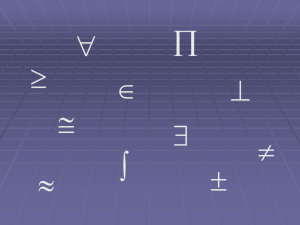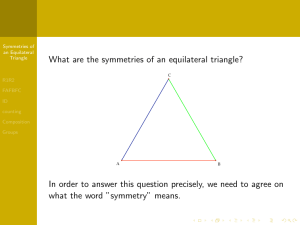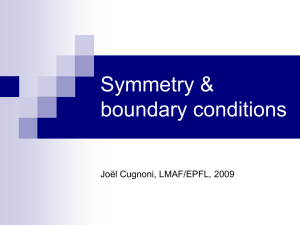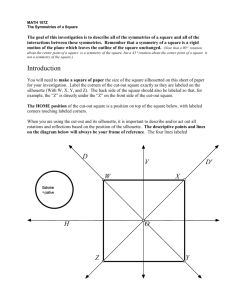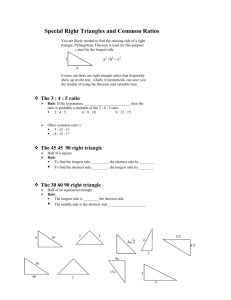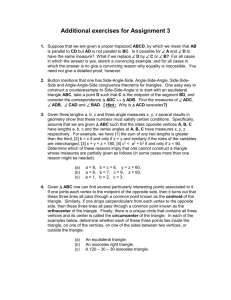Symmetry Groups
advertisement
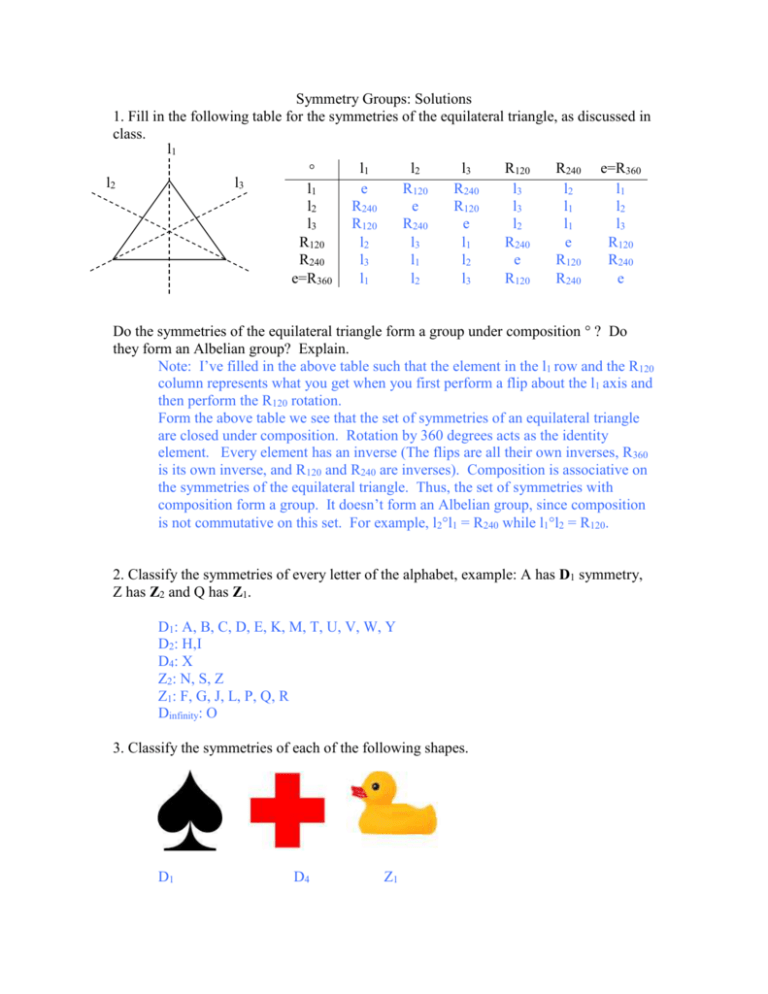
Symmetry Groups: Solutions 1. Fill in the following table for the symmetries of the equilateral triangle, as discussed in class. l1 l1 l2 l3 R120 R240 e=R360 l3 l2 l1 e R120 R240 l3 l2 l1 l2 R240 e R120 l3 l1 l2 l3 R120 R240 e l2 l1 l3 R120 l2 l3 l1 R240 e R120 R240 l3 l1 l2 e R120 R240 e=R360 l1 l2 l3 R120 R240 e Do the symmetries of the equilateral triangle form a group under composition ? Do they form an Albelian group? Explain. Note: I’ve filled in the above table such that the element in the l1 row and the R120 column represents what you get when you first perform a flip about the l1 axis and then perform the R120 rotation. Form the above table we see that the set of symmetries of an equilateral triangle are closed under composition. Rotation by 360 degrees acts as the identity element. Every element has an inverse (The flips are all their own inverses, R360 is its own inverse, and R120 and R240 are inverses). Composition is associative on the symmetries of the equilateral triangle. Thus, the set of symmetries with composition form a group. It doesn’t form an Albelian group, since composition is not commutative on this set. For example, l2l1 = R240 while l1l2 = R120. 2. Classify the symmetries of every letter of the alphabet, example: A has D1 symmetry, Z has Z2 and Q has Z1. D1: A, B, C, D, E, K, M, T, U, V, W, Y D2: H,I D4: X Z2: N, S, Z Z1: F, G, J, L, P, Q, R Dinfinity: O 3. Classify the symmetries of each of the following shapes. D1 D4 Z1 4. Find examples of things with D4, D1, Z4, Z2, and Z1 symmetry. Attach pictures or sketches of the objects. Find at least 1 example (not already mentioned in class) for each type of symmetry. Answers will vary. Ask me for examples if you have any questions on what possible examples might be.
